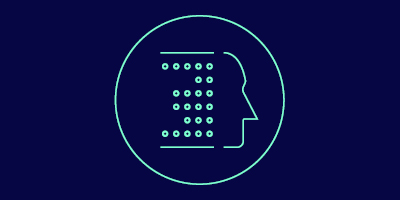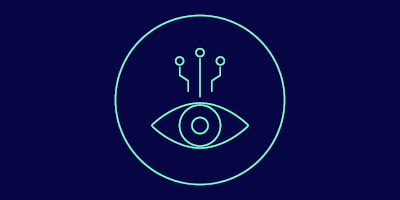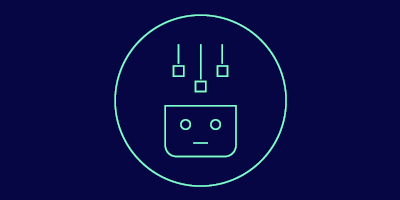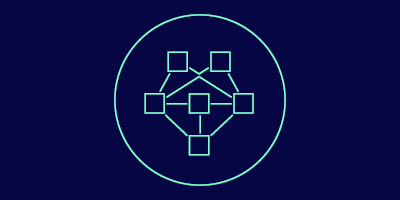
You are here
- Home
- Trends in Learning 2023
- This year's trends
- Multimodal learning
Multimodal learning
About this trend
Multimodal learning is when learning happens through more one than one mode – in written form, audio and visual, for example. The term ‘mode’ refers to culturally and socially shaped communication resources – images, words, sounds and gestures. ‘Medium’ and ‘media’ refer to material resources, such as paper, or technology used. Multimodal learning enables learners to learn and demonstrate their learning through multiple modes, giving them choice and greater representation. It also develops employees’ knowledge and skills in multimodal literacy.
Multimodal literacy involves awareness of four things:
- The possibilities and constraints of different modes of communication
- How modes can work together to produce meaning - how images and words can be combined, for example
- How the medium shapes how modes are distributed and how meaning is communicated
- How genre (type of communication or writing style) affects how a message is structured for a particular audience in a particular context. For example, blogs and tweets are text genres that construct messages differently for different audiences in different contexts
Using different approaches to knowing improves accessibility and inclusivity, as well as enhancing engagement, understanding and the retention of knowledge.
Workplace communications increasingly require multimodal awareness and competence. For example, that people use spatial and gestural modes appropriately in intercultural communication.
Multimodal approaches have actually been around and used for almost 20 years, but only on a small scale because text-based learning has always dominated. It is only now that they are becoming more widely used and that is largely because of social and technological changes. Socially, there is a strong drive for greater accessibility and inclusivity in learning (think decolonising the curriculum and Universal Design for Learning). This is leading to multiple means of representation to enable diverse ways of knowing and learning. Also, generative AI tools such as ChatGPT are generating various types of text, which has implications with regards to the assessment and evaluation of learning. Concerns around academic integrity and plagiarism mean that organisations are considering using multiple approaches to assessing knowledge.
The expert view
Nahdia Khan, Chief Impact Officer at Mind Tools

We’ve been tracking multimodal learning in the workplace since 2017. Despite its benefits - increased employee motivation, confidence and enhanced learning, for example - only 23% of L&D programmes in organisations are multimodal. There are multiple reasons why multimodal learning hasn’t become dominant, including complexity, measurement of impact, in-house L&D team capabilities, and a lack of learning design expertise in building multimodal experiences.
We must move away from seeing learning as an event happening at a given point in time – it’s a continuous process. This will help us recognise how multiple tools and approaches to learning can have synergistic effects (a leadership workshop with high-quality resources before and after the session to enhance knowledge retention and application, for example) and help make learning stickier. And in the content space, the multimodal approach definitely resonates better with the end user experience.
Multimodal approaches are a key way for L&D leaders to ensure learning is aligned with the diverse needs of employees, teams and departments. It’s about giving people the tools and the agency to design learning so it works for them.
Multimodality doesn't necessarily mean just mixing stuff. The main thing is purpose and having synergy between different modalities. L&D needs to think about why multimodality works, learning design principles, how things fit together and what is complementary.
Content modalities should be focused on practical application – solving real-world work problems at the point of need, with a wide range of content formats to suit different preferences and situations and that will empower people and build confidence.
Here’s an example of what L&D could expect to find in a toolkit offering a wide range of learning modalities:
- Audio and video interviews with subject matter experts, discussing key concepts and theories and offering practical tips for learners
- Infographics that engage learners while distilling key concepts into an easily digestible format
- Animated video – an engaging way to deliver key learning concepts, prompting reflection through a series of reflective questions at the end
- Interactive self-assessments that give a score at the end and skills development advice.
- Playlists, enabling people to create playlists on pretty much any topic they choose, using the resource types they feel help them best to learn.
Top tips:
- Get the user experience in there. Understand what multimodal learning drives for the user
- Explain to the end user what the value and benefits are. You aren’t giving them a toolkit with that level of variety because it’s nice – it’s because it gives real value. L&D sometimes creates experiences in a bubble based on what they think but end user insights are really valuable.
- If you have a dynamic content experience and engagement with users, they can tell you what they are engaging with – that’s really useful and will help to future-proof solutions
- Work better with vendors to encourage them to partner with you in this space. Talk to vendors about what’s working well
- Focus and experiment on getting the right level of content that will enable learning transfer – be wary of content overload
Multimodal looks at different ways of knowing, diversifying the representation of knowledge. Traditional education and learning have been very text-based but now we have to consider the full repertoire of different modes and modalities of learning.
Professor Agnes Kukulska-Hulme
Institute of Educational Technology, The Open University
Resources:
- A seminal book that explains multimodal theory: Kress, G. R. (2010). Multimodality: A social semiotic approach to contemporary communication. Taylor & Francis
- A publicly available journal article that illustrates multimodal literacy practices required in the workplace: Hartle, S., Facchinetti, R., & Franceschi, V. (2021). Teaching communication strategies for the workplace: a multimodal framework. Multimodal Communication, 11(1), 5-15. https://doi.org/10.1515/mc-2021-0005
- A website that offers resources for creating multimodal texts: O’Brien, A. (2020). Creating multimodal texts: https://creatingmultimodaltexts.com/
Read the original report behind Trends in Learning
|
The Innovating Pedagogy report is an annual report co-authored by academics at the OU's Institute of Educational Technology, and this year, together with researchers from the Centre for Innovation in Learning and Teaching at the University of Cape Town. |
Find out how we can help your organisation
Please contact us to speak to one of our business team advisors.
Not on our mailing list?
Sign up to receive regular emails that are full of advice and resources to support staff development in your organisation.
.jpg)




